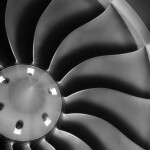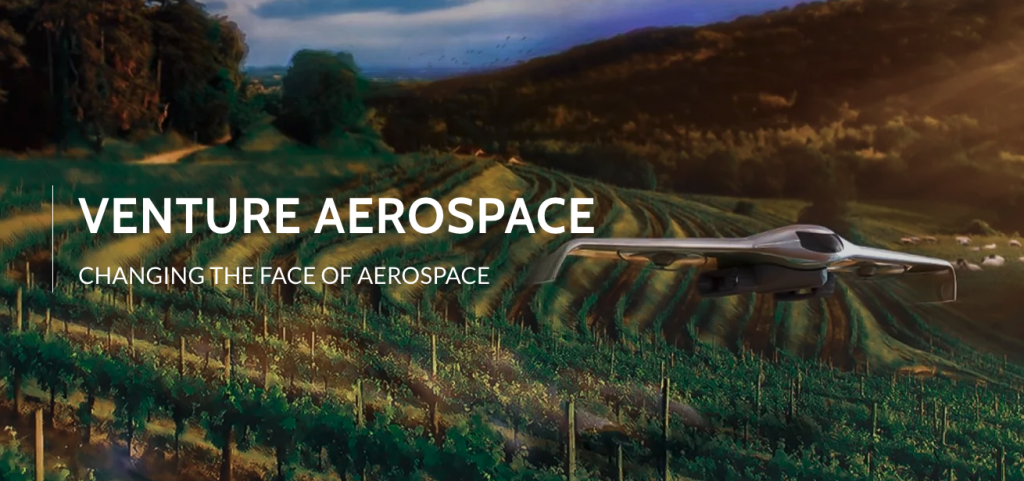As Commercial UAV News has spoken about many times before, the technical challenges the drone industry faces continue to revolve around what can be carried, how long and how far it can be carried, and the conditions it can fly in. In many of these discussions, we’ve focused on how manufacturers are solving these issues using more-or-less standard propulsion methods and materials.
These methods and materials are well-studied and have been used for decades to build and power many of our machines. We know how they work, what they weigh, and how they will impact the aerodynamics of our machines. Though many configurations and alterations have enabled us to shave off a few ounces or pounds, and get more thrust or battery/fuel efficiency, these innovations are focused only on improving what is already there rather than building something new. The question the founders of Venure Aerospace asked a little over two years ago was: is sticking with convention enough? Will the technologies of the past several decades be suitable to realize the potential of drones? Can we find better methods and materials that will be purpose built for the industry?
Their background spans back to NASA where they participated in many experiments focused on designing technologies that would need to function in space. Some of these were used by board member and advisor, veteran astronaut, Scott Parazynski. Because we can only approximate the conditions in space, much of the technology they helped to develop was used for the first time in space—there was little room for error. They left NASA with a methodology on how to experiment, test, and prove the efficacy of new inventions, a methodology that they have leveraged throughout their careers and have passed down to the lead engineer—Sasha Mela.
Fresh out of college with an Aerospace engineering degree from Illinois Tech in Chicago, Mela discovered a different environment at Venture Aerospace than her peers. Venture encouraged her to build and experiment, to test conventional thoughts and validate her findings, while also providing her with the tools and skills to turn ideas into products.
“The well-controlled experimentation conducted in-house gives Venture Aerospace solid ground on which to build new ideas,” explained the Venture Aerospace team when asked about their approach to product development. “Sasha and her team have been able to use these well-designed and often very simple experiments to be able to step confidently down a new path. These logical steps often create what look from the outside as radical leaps but in fact are well-developed logical conclusions.”
“If we feel we can take it to production, we’re fully encouraged to go and try every way we can do it,” Mela added. “I’m able to explore every idea I have, and really do all of the research that’s necessary to create a final product.”
Since joining Venture Aerospace, Mela has led the development of three new patent-pending products:
- Melanyte-G, a new aerospace material that they say is lighter, stronger, and quicker to fabricate made from the novel combination of epoxy, carbon fiber, and Polyurethane that once cured works like tempered glass.
 The Phantom-EDC a jet engine without a turbine, shaft, or compressor that they say has 15% more fuel efficiency and a 30% higher thrust to weight ratio.
The Phantom-EDC a jet engine without a turbine, shaft, or compressor that they say has 15% more fuel efficiency and a 30% higher thrust to weight ratio.- A unique augmented airframe design that puts the engine in the wing of the aircraft, which, according to the team, can act like a wing moving through the air, even when stationary during vertical take-off and landing, which means it has greater lift, more stability and a large glide ratio.
Each of these products in and of themselves can be applied to solve a number of challenges for the industry from reducing airframe weight and increasing payload capacity/endurance with Melanyte-G and gaining extra thrust and fuel efficiency with a turbine-less jet engine to making drone design safer by ensuring a controlled landing. But the team looks at these discoveries as just the beginning; they want to leverage this technology to add additional functionality to drone technology. With the added power and reduced weight, they are looking at what drones can do while they are flying. For example, a drone that can paint or perform repairs while in flight or can safely grab and transport items from the ground. The goal is to make drone technology the best possible tool for in-the-air commercial applications.

Another key to Venture Aerospace’s approach to technology development is baking production practices into their approach from the very beginning. They researched the materials to make sure everything can be mass produced and cost efficient.
“We design to make a product that is cost effective for everyone all over the world,” stated Mela. “We're not trying to make aerospace that's only accessible to a few. And we're not trying to prove conceptual ideas, we work backwards from something that we can manufacture all over the world for everyone.”
This is no small matter. For anyone who has run up against limited supply or had to deal with complex manufacturing processes, knowing a product can be mass produced quickly anywhere in the world can be a game changer for the potential scalability of the industry. The products Mela used for these inventions are readily available and the design is easy to reproduce by leveraging mass production practices.
From the start, Sasha made sure everything could be built by a robot or a machine. This means Venture Aerospace can quickly produce these drones at scale. Sasha explained, “The process is simple. To make a drone, we have a mold, we spray the inside to cure the Melanyte-G, we put all the electrical structures, the mechanical structures, and so on inside and in half a day, it's done. That’s how quick and streamlined the production process is.”
To really grow this industry, we will need scalable drone manufacturing processes. By choosing to ensure viable production processes at the beginning of each new project, Venture Aerospace is not only making innovative products that can solve real technical challenges in drone design, but they are doing it with scalability in mind.
This industry first got its boost when DJI began supplying drones in large volumes to a global market; as demand grows, the manufacturer who can keep up will logically grow with it. Venture Aerospace is one of the companies looking to provide that level of scalability and innovation.
















Comments